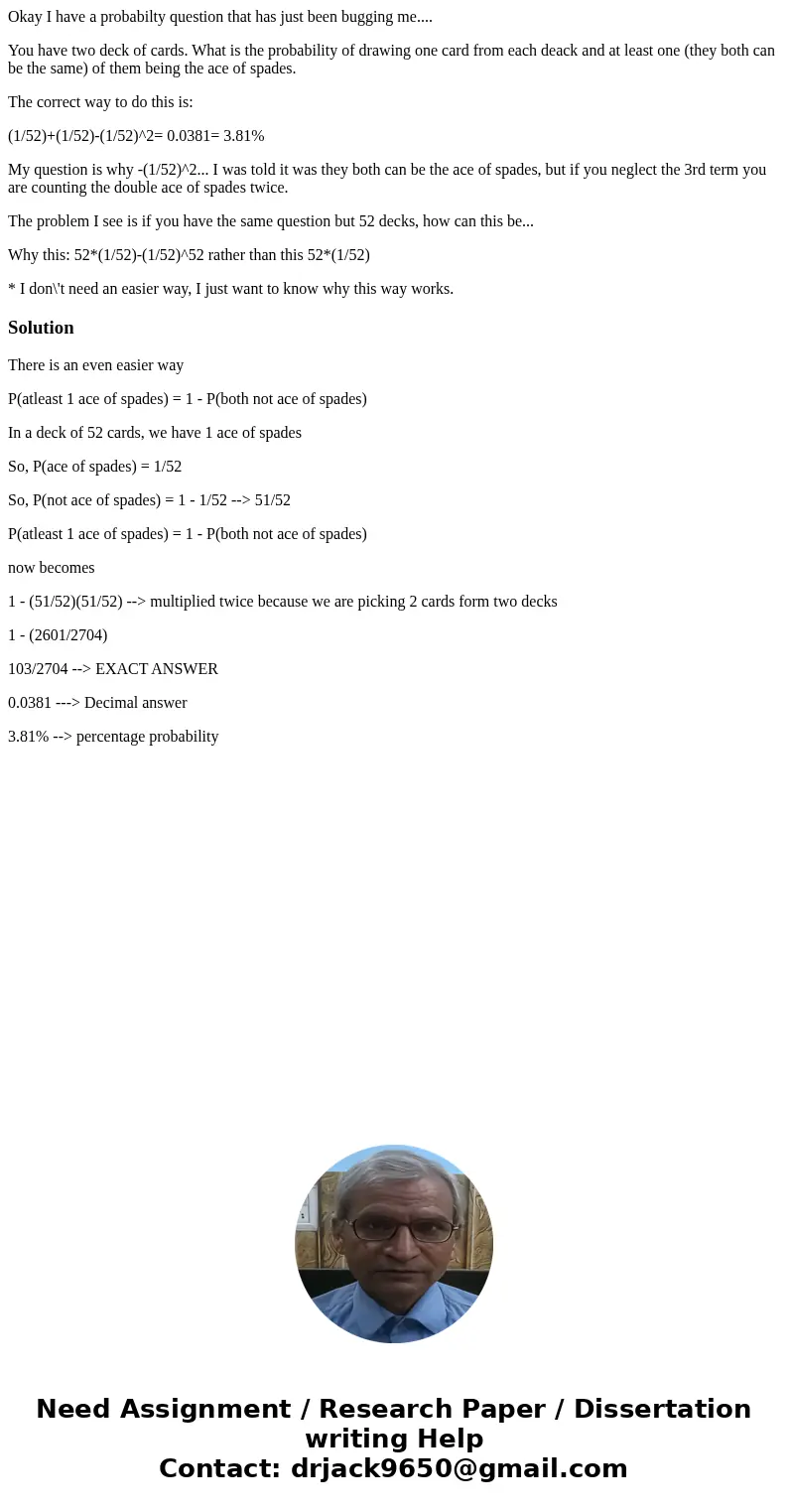Okay I have a probabilty question that has just been bugging
Okay I have a probabilty question that has just been bugging me....
You have two deck of cards. What is the probability of drawing one card from each deack and at least one (they both can be the same) of them being the ace of spades.
The correct way to do this is:
(1/52)+(1/52)-(1/52)^2= 0.0381= 3.81%
My question is why -(1/52)^2... I was told it was they both can be the ace of spades, but if you neglect the 3rd term you are counting the double ace of spades twice.
The problem I see is if you have the same question but 52 decks, how can this be...
Why this: 52*(1/52)-(1/52)^52 rather than this 52*(1/52)
* I don\'t need an easier way, I just want to know why this way works.
Solution
There is an even easier way
P(atleast 1 ace of spades) = 1 - P(both not ace of spades)
In a deck of 52 cards, we have 1 ace of spades
So, P(ace of spades) = 1/52
So, P(not ace of spades) = 1 - 1/52 --> 51/52
P(atleast 1 ace of spades) = 1 - P(both not ace of spades)
now becomes
1 - (51/52)(51/52) --> multiplied twice because we are picking 2 cards form two decks
1 - (2601/2704)
103/2704 --> EXACT ANSWER
0.0381 ---> Decimal answer
3.81% --> percentage probability

 Homework Sourse
Homework Sourse